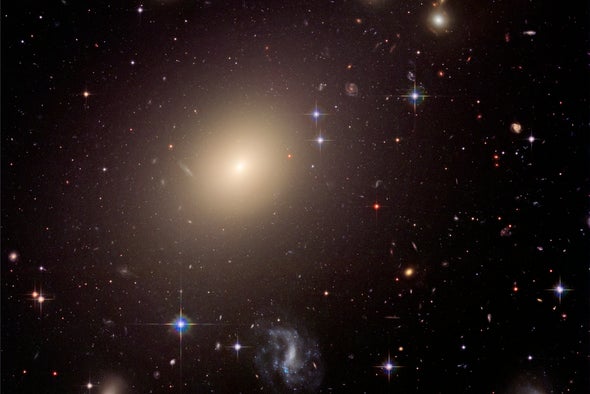
Recently an international team of astronomers traveled back in time to when our universe was just 1.8 billion years old. They did not go directly, of course, but settled for the next best thing: gathering 17 hours’ worth of starlight from a single small patch of the distant cosmos with the Large Binocular Telescope Observatory atop Mount Graham in southeastern Arizona. Such clock-rewinding virtual voyages are routine in astronomy—light’s finite speed ensures that the deeper into space you see, the further back in time you gaze. And many observatories around the globe can gather faint photons from ancient skies. But this particular cosmic jaunt concerned something special—even disturbing: an abnormally hefty elliptical galaxy dubbed C1-23152. This egg-shaped aggregation of stars is so outsize that it defies conventional models of its origins. Simply put, C1-23152 seems to be too big to fit the early universe.
It is thought that the first galaxies were relatively minuscule, clumping together from smaller building blocks bit by bit and only reaching gargantuan sizes after billions of years of growth. Boasting an estimated 200 billion solar-mass stars, C1-23152 tips and then overturns the scales for this scenario. And it is not alone. Over the past decade, astronomers have discovered several very ancient, very big galactic behemoths. In 2017, for example, a pair of extremely large galaxies—one capable of churning out 2,900 solar masses of stars per year—were found to exist less than 800 million years after the big bang. In 2019 a family of 39 huge galaxies—each a star factory manufacturing perhaps 200 solar-mass stars per year—were found zipping through the universe within two billion years of its birth.



Comments
Post a Comment